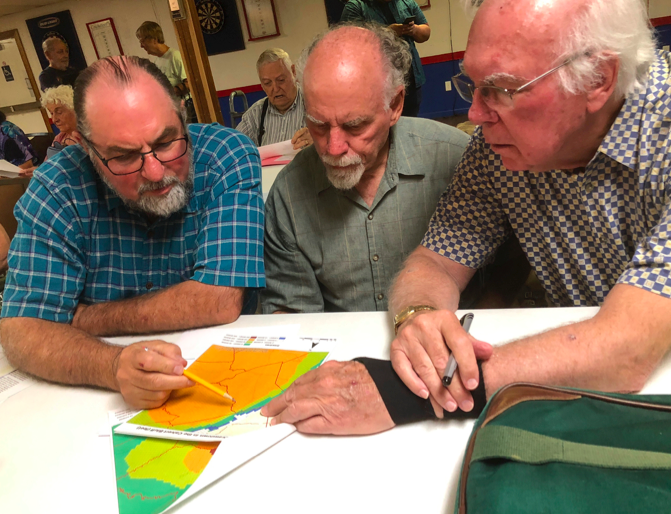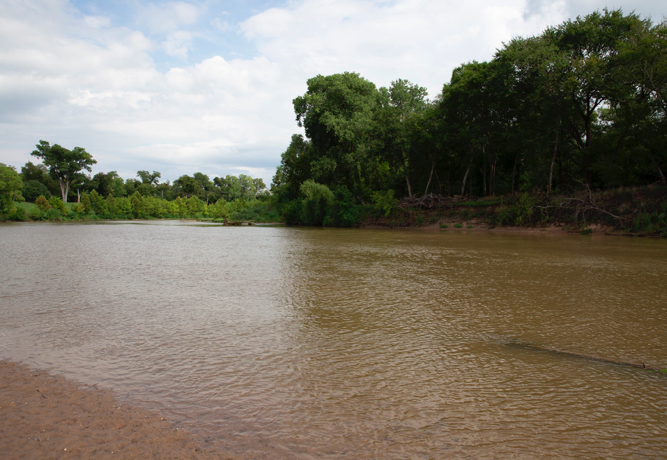Guest Editorial by – Al Braden
Al Braden is a local environmental activist and photographer.
The Bastrop area is ground zero for so many competing players – all wanting to put big straws in the ground – all fighting for the same Simsboro Aquifer water.
Under state law, groundwater conservation districts were created to manage the water resources in a responsible manner while protecting the local area from over pumping. The Simsboro formation is part of the broad Corizo-Wilcox sand aquifer that takes thousands of years to recharge.
The urgency residents face next week is a public permit hearing by the Lost Pines Groundwater Conservation District to review a 25,000 acre-feet/year (AFY) application by LCRA to tap the Simsboro aquifer for unspecified future use throughout its service area – clearly exporting it outside of Bastrop.
This is over eight billion gallons a year and is on top of all the other commercial interests in the area that have or are applying for permits.

Bastrop landowners rally to protect their wells from water grab by LCRA’s 25,000 acre-foot/year permit application for Simsboro Aquifer water. Michele Gangnes, of the Simsboro Aquifer Water Defense Fund spoke to over 200 Bastrop and Lee County residents in two consecutive meetings at the American Legion Hall in Bastrop, September 13th. They learned the issues and strategized how to defend their well water from LCRA and other water pirates planning big export wells in the precious Simsboro Aquifer.
Local Ground Water Co-op
Aqua Water Service Corporation has been providing water to about 50,000 Bastrop area residents since the 1970’s. Aqua’s present use is estimated around 9,000 AFY, though it is permitted for twice that amount.
LCRA’s Goal
LCRA’s goal, according to General Manager Phil Wilson is, “in addition to providing drinking water for residents, the water could be used throughout our Central Texas service area for manufacturing, irrigation and power production.”
LCRA was created by state legislation in 1934 for “the control, storing, preservation, and distribution of the waters of the Colorado River and its tributaries within the boundaries of the authority for irrigation, generation of electric energy and power, and other useful purposes.” It has always had the responsibility for managing river water.
Now, clearly LCRA wants to get into the lucrative groundwater development business – though its charter is to manage the surface water of the Colorado River.
LCRA already has four large wells at its Lake Bastrop power plant to supplement their needs – and, incidentally, allow LCRA to sell more of its river water elsewhere. LCRA’s lakeside groundwater claim is up to 10,000 AFY. Other than the swap plan at Lake Bastrop, this is the first time that they have crossed into the groundwater business.
Other Ground Water Exporters Target Bastrop’s Aquifer
Thirsty San Antonio got permits to pump 50,000 AFY from the same aquifer in nearby Burleson County. Though the original developer of the ‘San Antonio Hose’ went bankrupt, the construction company and city are plowing ahead to have the water flowing by 2020.
An Austin based company came next. Cleverly named ‘Recharge LP’, it leaves the impression that it might help the aquifer. Headed by former Mayor Will Wynn, Recharge (formerly End Op) got into action in 2016 with a permit from the Lost Pines Groundwater Conservation District for 56,000 AFY. Though close lipped, they apparently want to sell water to major developers in Hays, Travis and Williamson counties. This application was approved by the water district, but is currently under court challenge.
In addition, Forestar Real Estate Group has an active permit for up to 28,500 AFY for new developments in Hays, Travis and Williamson counties.
All of this adds up to well over the 110,000 AFY that scientific studies show to be totally unsustainable. But with millions of dollars and billions of gallons at stake, the Bastrop region has a big target on its back.
The Lost Pines Groundwater Conservation District is responsible for evaluating water permits and their effect on the aquifers and for issuing permits. They ordered a study from Daniel B. Stephens & Associates dated April 6, 2018 showing the impact from the LCRA proposal. It shows water table drops starting at 300 feet near the wells, 100 feet as far out as Smithville and 50 feet into Lee and Fayette Counties.
Karst vs. Sand Aquifers
Austin residents are familiar with the Edwards Aquifer feeding Barton Springs and many towns between Austin and San Antonio. It is a porous limestone formation known as a karst aquifer. Rain water pours into surface openings, flows underground and appears at springs in a matter of days to weeks. Any surface contamination damages the springs nearly instantly. Recharge is immediate and if surface water dries up, soon do the springs.
Bastrop’s Simsboro Aquifer is part of the Corizo-Wilccox group of sand aquifers that stretch across a broad swatch of Texas from the Louisiana border to the Rio Grande. Deep sand aquifers like these, recharge very slowly – thousands to tens of thousands of years. They contain vast amounts of water at varying levels. But if pumped in excess of their recharge rate, their levels drop affecting all users. Pulling huge amounts of water for export will drop the water table across the area causing many existing wells to run dry.
In addition, the Colorado River below Bastrop is threatened because of both existing and proposed groundwater pumping. Normally a gaining stream south of Bastrop where springs replenish the river, pumping would draw down the aquifer and cause river water to flow into the aquifer, diminishing or stopping flow downstream in dry weather.

Environmental Stewardship Executive Director Steve Box confers with concerned landowners Phil Cook and John Watson as they study new maps of groundwater drawdown throughout the Bastrop area that will be caused by LCRA.
The LCRA permit public hearing September 26th at 7pm at the Bastrop Convention Center, 1408 Chestnut St. Please come out and support the rights of Bastrop landowners to protect the water under their homes and ranches.
If you are a landowner near the Griffith League Ranch – with or without a well – you can file an objection to the LPGCD by September 21st.
And if you’d like to learn more about this issue, you can check out these organizations – Environmental Stewardship, Simsboro Aquifer Water Defense Fund, and Friends of Bastrop Water.
Please note – editorials and sponsored posts are written by guest writers to inform and educate the community on a variety of different viewpoints, as well as to share information about local eco-friendly businesses and organizations. However, they do not necessarily reflect the opinions of the Austin EcoNetwork.


